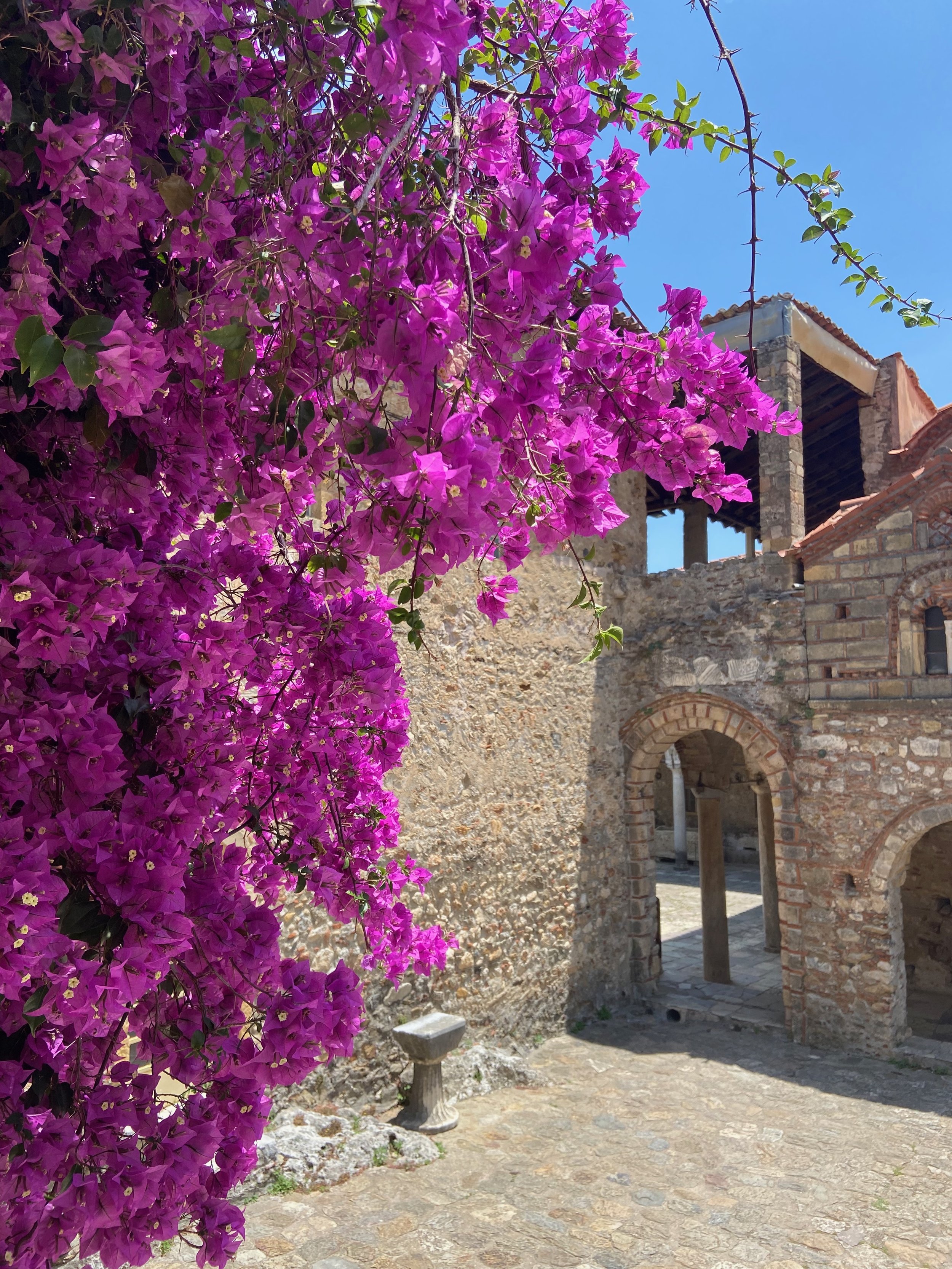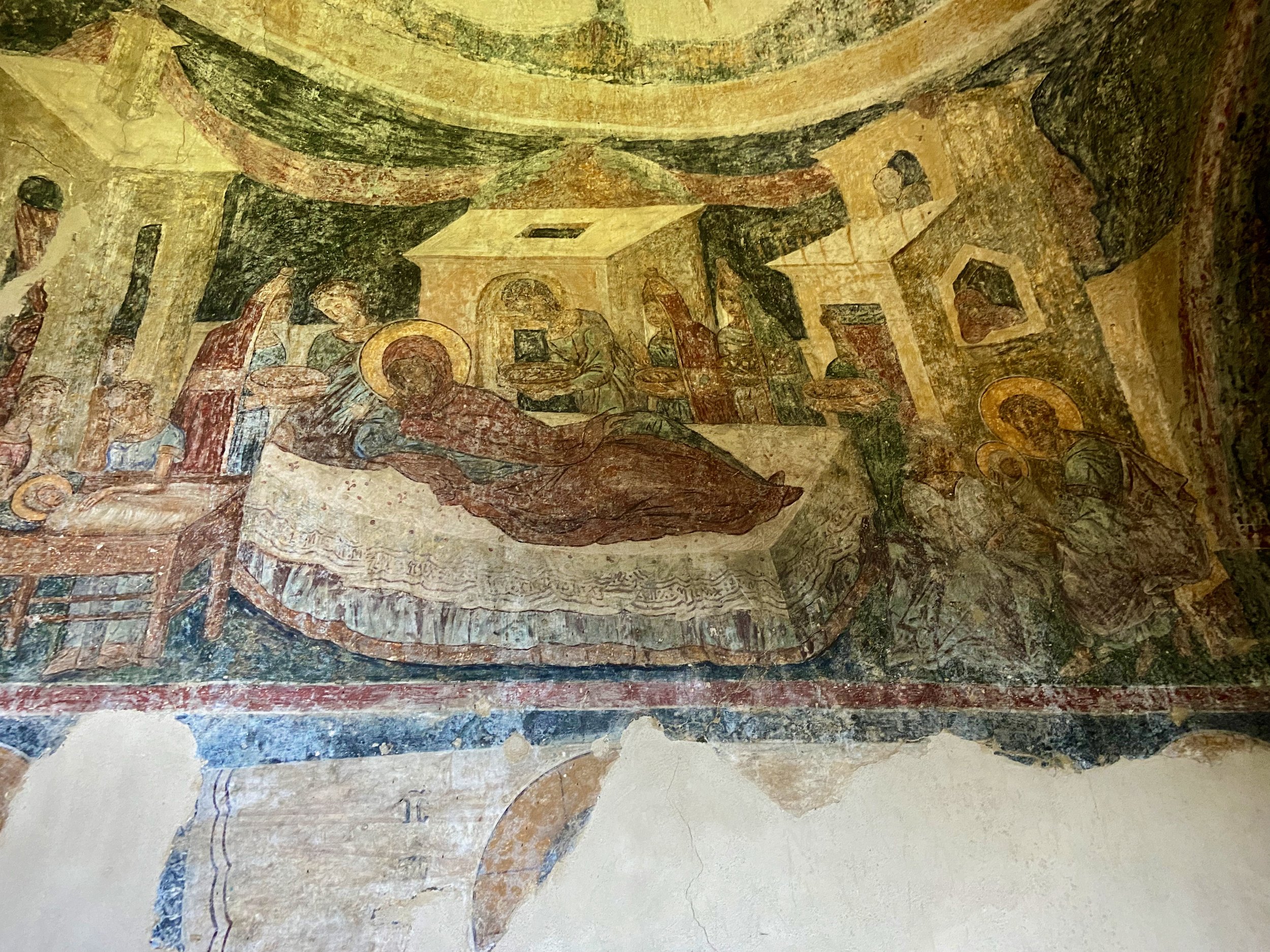Taken by surprise in Mystra
Our brains are wired to think of ancient Greece. Homer and Aristotle. Athens. Sparta. The Olympic Games and the story of the Trojan Horse…..all that stuff.
Most visitors to Greece don’t pay much attention to later times, after the Roman Conquest, and into the centuries of the great Byzantine Empire — the world of the Christian Greeks, versus the pagan.
The Byzantines lasted over 1,000 years, during which time their power ebbed and flowed, as they competed with the Venetians, crusading Francs, blood-thirsty Saracens, Ottomans to the east, Slavs and other barbaric people to the north. And that probably just scratches the surface.
In the 13th century, the Francs established a stronghold to protect their interests in the Morea (Peloponnese), on the northern flanks of Mount Taygetus. Mystra belonged to the French for about a decade, until the Byzantines took possession, expanding its fortifications, and creating a center of control for their own ambitions in the south of Greece.
Under the Byzantines, Mystra became an important religious and cultural center, in addition to a strategic military asset, and the city flourished until the Ottomans came along and ruined everything.
I never knew any of this — hardly ever heard of the place — until I took a drive there after my companions on the Kalamata food tour highly recommended it.
They suggested I take the “intestine” road through the mountains, versus the freeway. And indeed, if you look at the route on Google Maps, there are sections of the drive that look a lot like an intestine, as the road bends and twists through impossibly steep valleys, up and up into the hinterlands.
I decided to go for the 1 1/2-hour drive as much as anything else. The two-lane road was well paved and narrow in only a few places, but it took me through a breathtaking landscape where sheer cliffs plunged into hell-deep gorges. For miles there was little sign of civilization other than a few passing cars. The trip took longer than I had planned because I kept stopping to take photos which really do not do it justice:
The mountain road to Mystra.
I assumed I’d arrive at Mystra, have a coffee, then make my way back to Kalamata for a swim. I figured there might be a few interesting things to see but not a hell of a lot. But as I approached the town, I was seriously blown away — the mountainside sprouted ruins of midieval castles, battlements, monasteries and churches. Many situated at impossible heights. How people who lived 800 years ago were able to build these structures halfway up a mountain is a testament to human ingenuity and sheer determination.
I paid the 12-Euro entry fee and started walking up the steep cobblestone paths, worn smooth by centuries of tired feet. At each turn, there was something new to see. A few of the buildings were barely more than roofless piles of ancient stones, but many were in better states of repair.
The walls and ceilings of the churches were covered in frescoes depicting biblical scenes, some faded and barely visible, others more vibrant and colorful. The Pantanassa Monastery, dedicated in 1428, and now functioning as a convent, contained one of the few churches still in use, with its ornate iconostasis typical of Greek Orthodox churches everywhere.
After a couple of hours wandering around in the blazing, 90-degree heat, my feet and my stomach were urging me to go. So I headed back to the car and stopped for an ice cream before the drive home. The higher sections of the city — including the main castle with its commanding fortifications at the very top of the mountain — would have to wait until my next trip.
I’ll be sure to arrive earlier in the day when it’s a little cooler. And I’ll definitely pack a good pair of hiking boots.
















